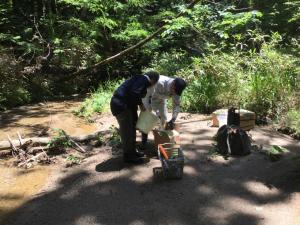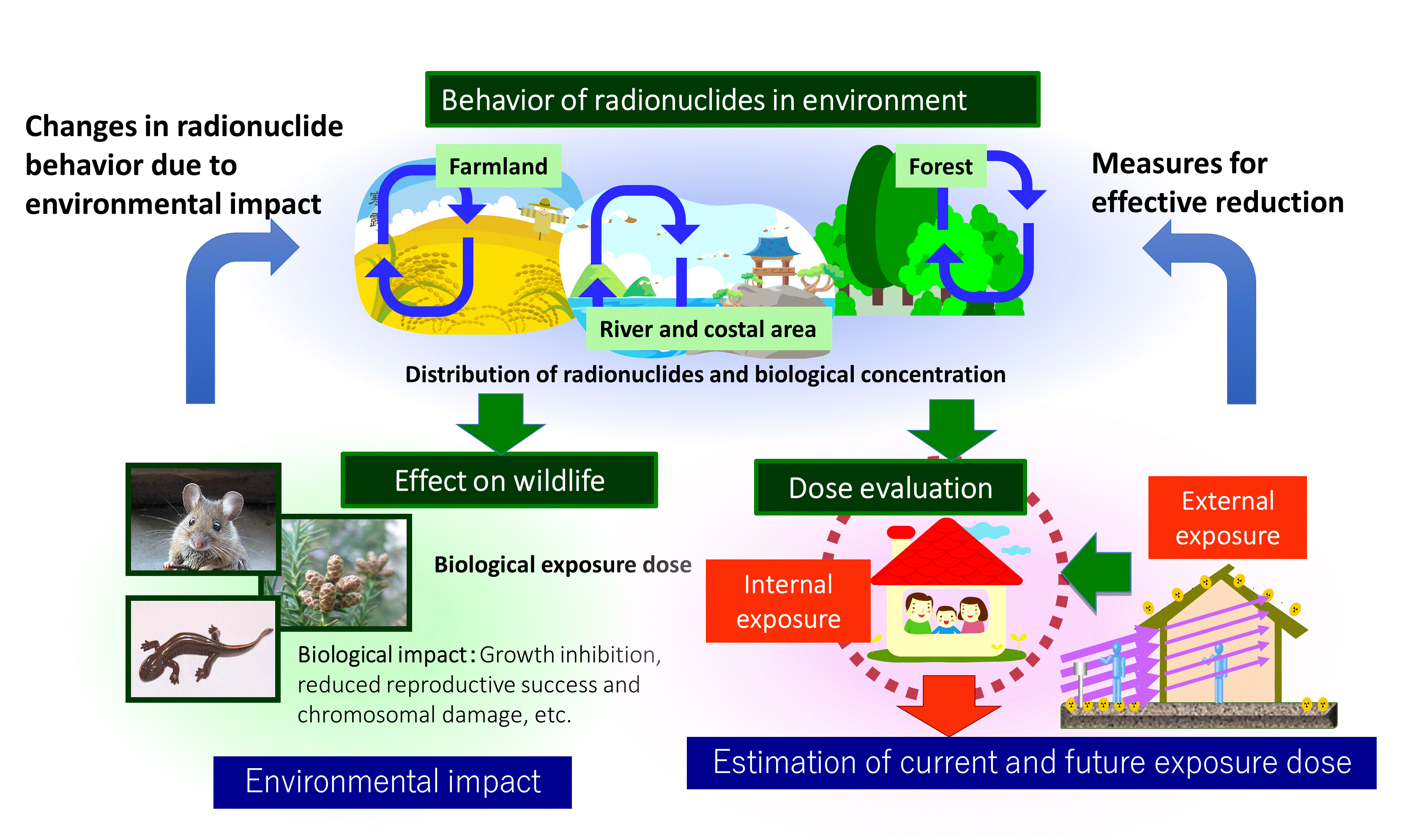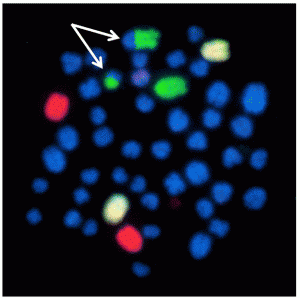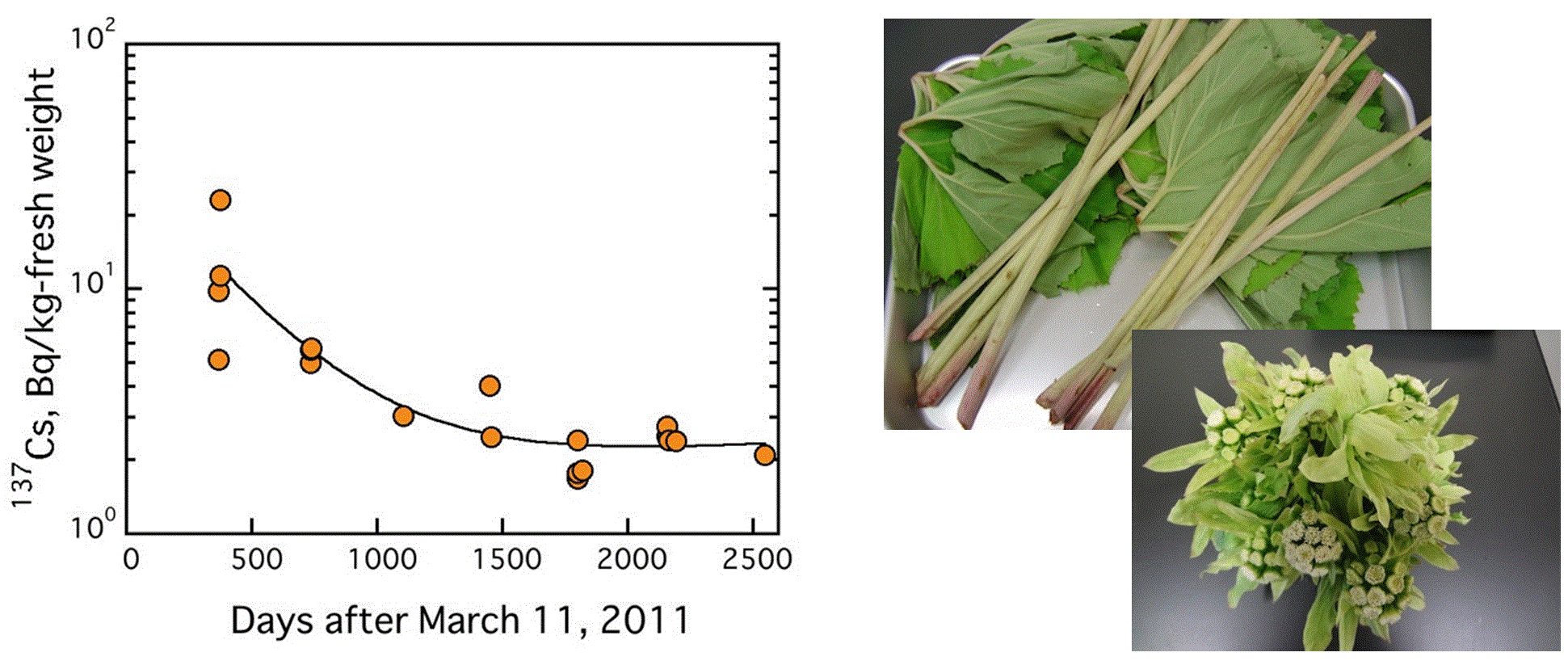The former Fukushima Project Headquarters was established in May, 2012 to manage and support all activities of NIRS assisting in the restoration of the areas affected by the Fukushima Daiichi Nuclear Power Plant (NPP) accident in Fukushima Prefecture. In April, 2019, the headquarters was reorganized as the Department of Radioecology and Fukushima Project of QST. The department manages research projects to address needs and concerns of the residents in Fukushima about possible exposure to low dose radiation from the surrounding environment, especially mountain and forest areas which have undergone hardly any decontamination, and the health effects of radiation and contamination of foods, water, playgrounds for children and so forth in daily life.
(List of Major Original Papers)

Environmental Radionuclides Research Group
Radionuclides transfer in territorial and marine environments through various media such as water, soil, sediment and living organisms. Long-term monitoring and investigations are in progress to elucidate the behaviors of radionuclides in the environment. Rapid analytical methods for Sr-90 and Pu isotopes measurement have developed with a high sample throughput and high precision. Studies have focused on the variation of activity concentration of various radionuclides in the forest and marine samples to elucidate the temporal-spatial distributions. Focusing on the environment surrounding the residents, we are developing a system that can estimate the radiation dose that residents will receive from the surrounding environment in the future.

Fig.1 Schema of study on environmental radionuclides
Environmental Radiation Effects Research Group
Radiation effects on non-human biota have been investigated around the F1-NPP. Higher frequencies of chromosomal aberrations, which can be regarded as a result of radiation exposures, were detected in the splenic lymphocytes of wild mice inhabiting the heavily contaminated area in the exclusion zone. However, there is hardly any direct evidence supporting the biological significance of such chromosomal aberrations. Japanese fir populations in the exclusion zone showed a significantly increased number of morphological changes, involving deletions of leader shoots of the main axis. The frequency of the changes corresponded to the radioactive contamination levels. Dose rate estimation and chronic irradiation experiment are in progress to examine whether the morphological changes were caused by radiation exposures. No possible radiation effects were observed in salamanders and medaka fish.

Fig.2 Translocation (arrows) detected in a wild mouse
Environmental Transfer Parameter Research Group
Environmental transfer parameters include how much amounts of radionuclides transfer from environmental media to foods, e.g., soil to crop and water to fish. Parameters also include decreasing rates of radionuclides from foods with time. Using these values, we could estimate radionuclides in our foods and internal dose from them. After the Fukushima Daiichi nuclear power plant accident, we studied wide varieties of food materials; an example was that 137Cs in Japanese butterbur continuously collected in the QST Chiba campus decreased with time for the first three years after the accident but the decreasing trend was not clear after that period (Fig. 3). Similar trends were found in many other edible plant materials as well as in animals. We will continue our studies on edible foods from wild for food safety to identify major factors affecting to the transfer of radiocaesium from the environment to foods.

Fig.3 137Cs concentration change with time in Japanese butterbur flower buds after the FDNPP accident
